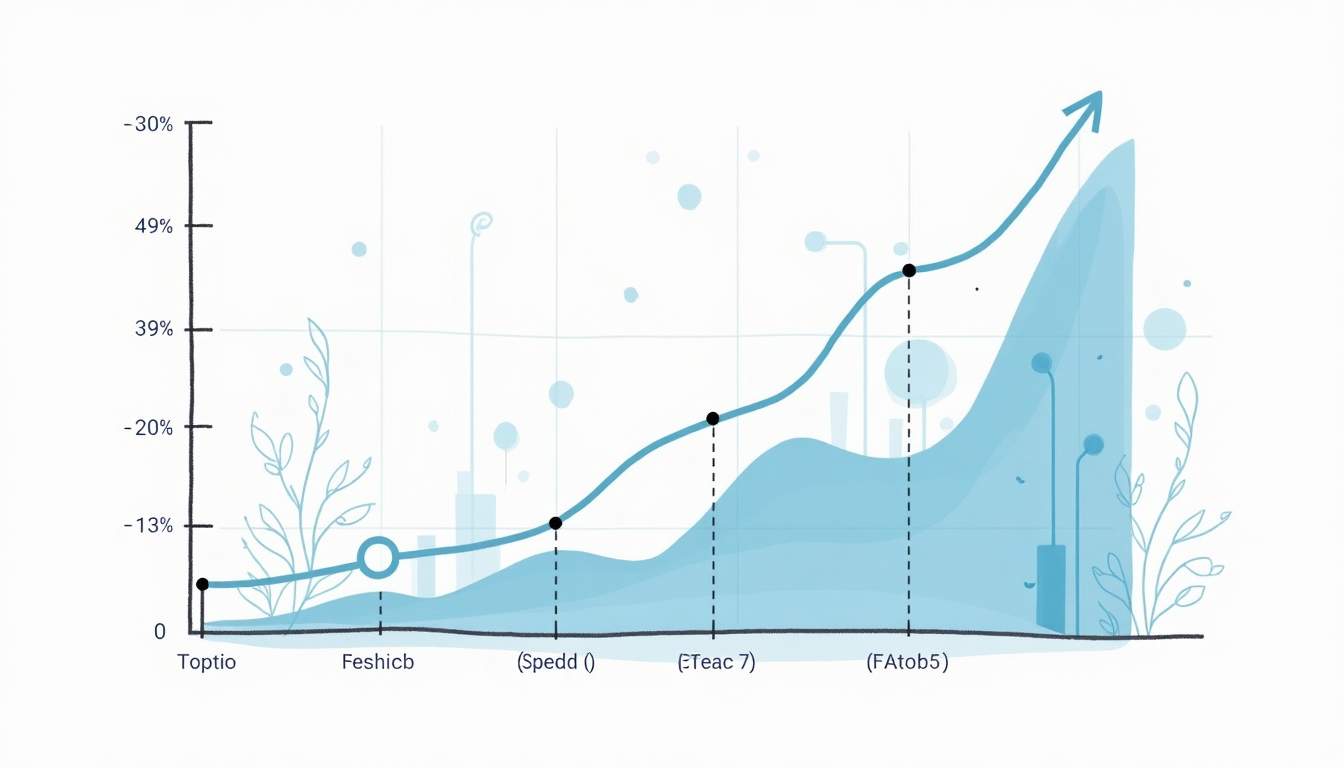The Impact of Node Client Versions on RPC Speed
In the rapidly evolving world of blockchain and Web3 development, the speed and reliability of Remote Procedure Call (RPC) endpoints are critical for seamless user experiences and robust application performance. Among the many factors influencing RPC speed, the version of the node client running the blockchain node plays a pivotal role. This article explores how different node client versions impact RPC speed, why staying updated matters, and practical strategies to optimize RPC performance in your Web3 applications.
Understanding Node Clients and Their Role in RPC
At the core of any blockchain network are node clients—software implementations that validate transactions, maintain consensus, and provide interfaces for external applications to interact with the blockchain. These node clients expose RPC endpoints that developers use to query blockchain data, submit transactions, and listen for events.
Node clients come in various versions, each introducing improvements, bug fixes, and optimizations. These updates can significantly affect the speed and reliability of RPC calls. For example, newer versions often include enhanced caching mechanisms, optimized database queries, or better concurrency handling, all of which reduce response times. Additionally, some node clients are designed to be more modular, allowing developers to customize their setups according to specific needs, which can further enhance performance.
Furthermore, the choice of node client can also influence the overall architecture of a blockchain application. For instance, some clients are more suited for high-throughput environments, while others may prioritize security and stability. This flexibility allows developers to tailor their solutions to the unique demands of their projects, ensuring that they can achieve the desired balance between speed, reliability, and resource consumption.
Why RPC Speed Matters for Web3 Applications
RPC speed directly influences user experience and operational efficiency. Slow RPC responses can lead to delayed transaction confirmations, outdated data displays, and even application timeouts. For decentralized finance (DeFi) platforms, NFT marketplaces, and real-time dApps, latency can mean lost opportunities or user frustration. Users expect instantaneous feedback, and any lag can result in a negative perception of the application, potentially driving them to competitors.
Moreover, RPC speed impacts backend scalability. Applications making millions of API calls daily require efficient RPC endpoints to maintain performance without escalating infrastructure costs. Therefore, understanding how node client versions affect RPC speed is essential for developers and infrastructure providers alike. In addition to the technical aspects, developers must also consider the geographical distribution of their node clients. Deploying nodes in various regions can help reduce latency for users across the globe, ensuring a more consistent and responsive experience. This strategic placement of nodes not only enhances performance but also contributes to the decentralization ethos of blockchain technology, making it more resilient against localized failures or attacks.
How Node Client Versions Influence RPC Performance
Node client versions affect RPC speed through several technical factors:
1. Protocol and API Enhancements
Each new node client version may introduce protocol-level improvements that streamline how data is retrieved and transmitted. For instance, newer versions might support more efficient batch requests or enhanced subscription models, reducing the number of round-trips needed for data fetching.
These improvements can lower latency and increase throughput, especially under high-load conditions common in popular blockchain networks like Ethereum or Solana.
2. Database and Storage Optimizations
Blockchain nodes maintain vast amounts of data, and how this data is stored and accessed impacts RPC response times. Updated node clients often optimize database queries, implement better indexing, or introduce new storage backends that speed up data retrieval.
For example, a node client upgrade might switch from a traditional key-value store to a more performant database engine, significantly reducing the time to serve RPC requests.
3. Improved Concurrency and Resource Management
Handling multiple simultaneous RPC requests efficiently requires robust concurrency management. Newer node client versions typically include enhancements in thread management, request queuing, and resource allocation, allowing them to serve more requests in parallel without degradation.
This improvement is crucial for RPC providers supporting multi-tenant environments or high-frequency trading applications where milliseconds matter.
4. Bug Fixes and Security Patches
While not directly related to speed, bug fixes and security patches in node client updates can prevent unexpected slowdowns caused by memory leaks, crashes, or denial-of-service vulnerabilities. Maintaining an up-to-date node client ensures stable and consistent RPC performance.
Case Studies: Node Client Versions and RPC Speed in Practice
Several real-world examples highlight the impact of node client versions on RPC speed and reliability.
Ethereum Clients: Geth and OpenEthereum
Ethereum’s most popular clients, Geth and OpenEthereum, regularly release updates that improve RPC performance. For instance, Geth’s v1.10.x series introduced significant optimizations in state trie caching and snapshot sync, reducing initial sync times and improving RPC responsiveness.
Applications relying on older Geth versions often experience higher latency and increased downtime during network congestion. Upgrading to the latest stable release can reduce RPC call latency by up to 30%, according to community benchmarks.
Solana RPC Providers and Auto-Routing
Solana’s high-throughput network demands ultra-fast RPC responses. Node client updates that optimize transaction processing and ledger access directly impact RPC speed. Additionally, leveraging RPC auto-routing techniques—where requests are distributed across multiple updated node clients—further enhances speed and redundancy.
Developers implementing Solana RPC auto-routing with up-to-date node clients report improved uptime and reduced latency spikes, critical for real-time applications such as gaming and decentralized exchanges.
Strategies to Optimize RPC Speed Beyond Node Client Versions
While keeping node clients updated is fundamental, combining this with advanced infrastructure strategies can maximize RPC performance.
Multi-Provider RPC Routing
Relying on a single RPC provider can introduce risks such as outages and latency spikes. Multi-provider RPC routing, which intelligently distributes requests across several providers, mitigates these risks and improves speed.
This approach leverages the strengths of different node client versions and infrastructures, ensuring that if one provider experiences slowdowns or downtime, others can handle the load seamlessly.
Multi-Cloud and Multi-Region Deployments
Deploying RPC endpoints across multiple cloud providers and geographic regions reduces latency by serving requests from the closest or fastest node. Integrating Google’s Multi-Cloud Proxy (MCP) technology, for example, enables efficient routing and scaling of blockchain APIs, enhancing both speed and reliability.
Multi-cloud RPC routing also provides redundancy, so if one region faces network issues, traffic is automatically rerouted without impacting end users.
API Aggregation and Orchestration
API aggregation combines multiple RPC endpoints into a single, unified interface, while orchestration manages request flow to optimize performance. These techniques, often supported by modern RPC aggregators, help balance load, reduce redundant calls, and improve overall response times.
By integrating these solutions, developers can abstract away the complexity of managing multiple node clients and focus on delivering fast, reliable Web3 experiences.
Conclusion: Staying Ahead with Node Client Updates and Infrastructure Innovation
The version of the node client running your blockchain nodes is a critical determinant of RPC speed and reliability. Newer versions bring essential protocol enhancements, database optimizations, and concurrency improvements that can significantly reduce latency and improve throughput.
However, maximizing RPC performance requires a holistic approach that includes multi-provider routing, multi-cloud deployments, and smart API orchestration. By combining up-to-date node clients with these infrastructure strategies, Web3 developers and infrastructure providers can deliver fast, reliable, and scalable blockchain applications.
In an ecosystem where milliseconds can translate into millions, understanding and optimizing the impact of node client versions on RPC speed is not just a technical detail—it’s a competitive advantage.
Ready to harness the competitive edge of optimized RPC performance for your Web3 applications? Look no further than Uniblock, the Web3 infrastructure orchestration platform trusted by over 2,000 developers. With Uniblock, you can connect seamlessly to blockchain data across 100+ chains, ensuring maximum uptime, minimal latency, and cost-effective scalability. Say goodbye to vendor lock-in and the complexities of decentralized infrastructure management. Start building with Uniblock today and scale your dApps, tooling, or analytics with confidence and ease.
.svg)






